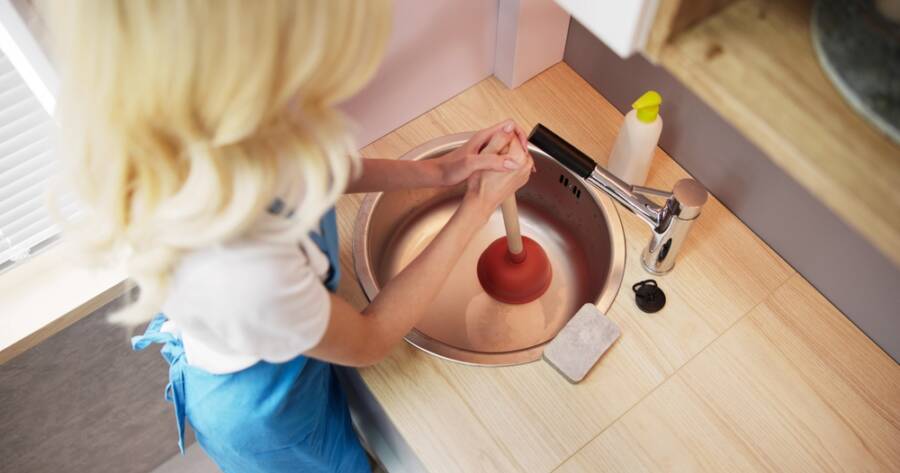Owning a home comes with responsibilities, including the need for occasional repairs. While some problems require professional help, many common issues can be fixed with basic tools and a little know-how. Learning simple DIY home repairs can save you time and money while helping you keep your home in great shape. With the right approach, you can handle minor fixes on your own and feel more confident as a homeowner.
Fixing a Leaky Faucet
A dripping faucet is not just annoying—it can also waste gallons of water over time. Most leaks occur because of a worn-out washer or cartridge inside the faucet. Fixing it is easier than you might think.
First, turn off the water supply to the sink. Then, remove the handle and unscrew the packing nut to access the washer or cartridge. If it looks damaged, replace it with a matching part from a hardware store. Reassemble the faucet, turn the water back on, and test it. In most cases, this simple repair stops the leak and prevents water waste.
Repairing Small Drywall Holes
Walls can get damaged over time, whether from moving furniture, hanging pictures, or everyday accidents. Small holes in drywall are easy to fix with a few materials.
For holes smaller than a quarter, spackle is the best option. Apply a small amount with a putty knife, smooth it out, and let it dry. Once dry, sand it lightly and paint over it. For larger holes, use a drywall patch kit, which includes a mesh patch and joint compound. Follow the same steps—apply, smooth, sand, and paint. This quick repair keeps your walls looking clean and well-maintained.
Unclogging a Slow Drain
A slow drain is a common plumbing issue that often results from hair, soap scum, or food buildup. Instead of calling a plumber, try a simple DIY fix.
Start by removing any visible debris from the drain opening. Then, pour boiling water down the drain to break up the clog. If that doesn’t work, mix baking soda and vinegar and pour it down the drain. Let it sit for about 15 minutes before flushing with hot water. A drain snake or plunger can also help remove stubborn clogs. Keeping your drains clear prevents bigger plumbing problems down the road.
Patching a Leaky Roof
A small roof leak can turn into a big problem if left untreated. While major roof repairs require a professional, you can temporarily patch a small leak to prevent further damage.
If you notice a leak inside, place a bucket under the drip to catch water. Then, check the roof for missing shingles or damaged flashing. Apply roofing sealant to the affected area or use a tarp as a temporary cover. This prevents water from seeping inside until you can arrange for a permanent repair. Regular roof inspections help catch minor issues before they turn into costly repairs.
Fixing a Running Toilet
A running toilet wastes water and increases your utility bill. In most cases, the issue is caused by a faulty flapper, float, or fill valve.
First, remove the toilet tank lid and check the flapper. If it’s worn or doesn’t seal properly, replace it with a new one. If the water level is too high, adjust the float by lowering it slightly. If the problem continues, the fill valve may need to be replaced. These simple fixes usually stop the running water and restore your toilet’s efficiency.
Sealing Gaps Around Windows and Doors
Drafty windows and doors can increase heating and cooling costs. Sealing gaps with weatherstripping or caulk is an easy way to improve energy efficiency.
Check for gaps around windows and doors by feeling for air leaks. If you find any, apply weatherstripping to door frames and window edges. Use caulk to seal small cracks or openings. This simple fix keeps your home comfortable year-round and lowers energy bills.
Restoring a Stuck or Squeaky Door
Doors can become stiff or squeaky over time, making them difficult to open and close. The good news is that fixing them is simple. For squeaky hinges, apply a few drops of WD-40 or household oil and move the door back and forth to distribute the lubricant.
If a door sticks, check for loose screws in the hinges and tighten them. If the door still doesn’t close properly, lightly sand the edges where it rubs against the frame. These quick fixes keep your doors working smoothly.
Keeping Your Home in Top Shape
Basic home repairs don’t have to be intimidating. With a little practice and the right tools, you can handle many minor issues on your own. Learning these DIY skills helps maintain your home’s value and saves you money on professional repairs.
By staying proactive, you can prevent small problems from turning into major ones. Taking care of your home not only makes it more comfortable but also gives you peace of mind.

